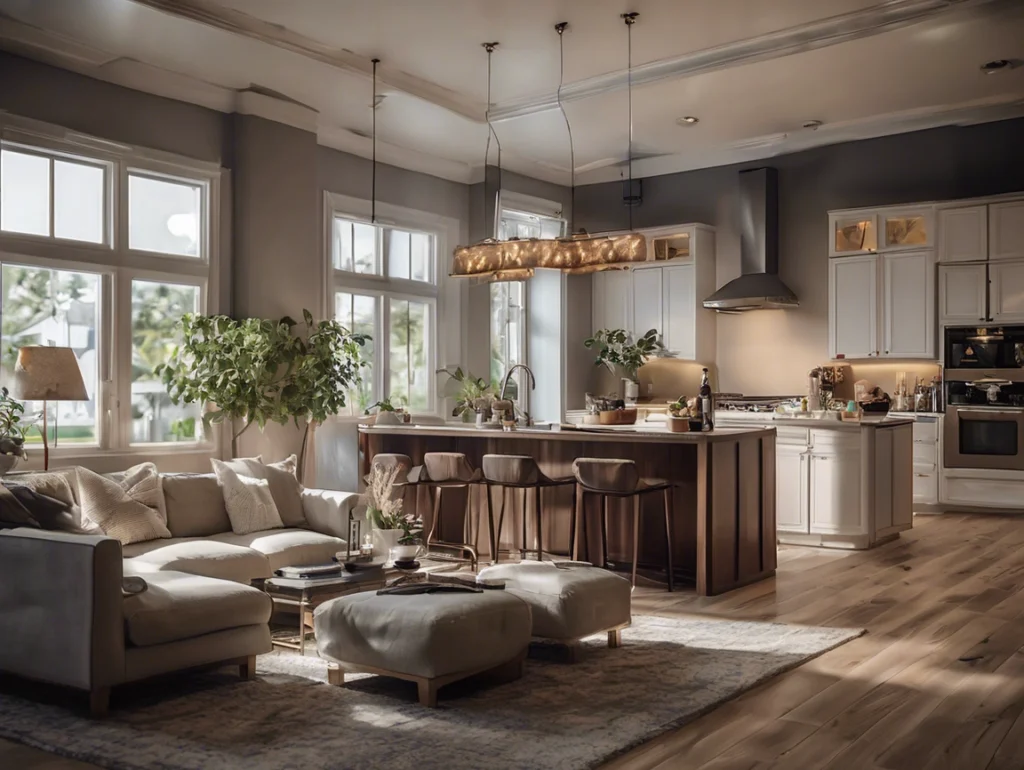Lighting is one of the most powerful yet underrated tools in architecture. A well-designed lighting scheme doesn’t just illuminate a space—it shapes mood, highlights form, and enhances both functionality and aesthetics. Whether you’re designing a cozy living room, a modern office, or a dramatic façade, architectural lighting design is what brings the built environment to life.
In this beginner’s guide, we’ll explore the fundamentals of lighting design, the different types of lighting you can use, and practical tips to help you start your journey into the world of architectural illumination.
Overview of Architectural Lighting Design
At its core, architectural lighting design is about blending science with art. It combines technical knowledge of light output, color, and energy efficiency with a creative vision that complements architecture. A good lighting design considers:
- Functionality – Ensuring that spaces are lit for their intended purpose.
- Aesthetics – Highlighting architectural features and enhancing visual appeal.
- Human Experience – Supporting comfort, safety, and emotional well-being.
- Sustainability – Using efficient solutions to reduce energy consumption.
Architectural lighting is not just about adding fixtures; it’s about creating harmony between light, architecture, and people.
Key Principles of Lighting Design
Every successful lighting design follows certain principles of light that help achieve balance:
- Layering of Light
A well-lit space uses multiple layers—ambient, task, and accent lighting—to create depth and flexibility. - Balance Between Light and Shadow
Good design doesn’t eliminate shadows; it uses them to add drama, contrast, and dimension. - Color Temperature and Mood
Warm tones (2700K–3000K) create cozy atmospheres, while cooler tones (4000K+) feel bright and professional. - Uniformity vs. Contrast
Task areas like kitchens need even illumination, while art galleries or restaurants may benefit from strategic contrasts. - Energy Efficiency
Incorporating LEDs, dimming systems, and smart lighting controls reduces environmental impact and cost.
Types of Architectural Lighting
Different lighting types serve different functions. Understanding these categories helps beginners choose the right approach:
- Ambient Lighting
The primary source of illumination in a space. Examples: ceiling lights, recessed downlights. - Task Lighting
Focused light for specific activities such as reading, cooking, or working. Examples: desk lamps, under-cabinet lighting. - Accent Lighting
Used to draw attention to architectural features, artworks, or textured walls. Examples: spotlights, track lighting. - Decorative Lighting
Fixtures that double as design statements—like chandeliers or artistic pendants. - Outdoor/Facade Lighting
Highlights building exteriors, landscapes, and pathways, enhancing safety and nighttime aesthetics.
Tips for Beginners in Lighting Design
If you’re new to architectural lighting, here are some practical tips to get started:
- Start with the Purpose – Ask: what will people do in this space? Let the function guide the design.
- Use Layered Lighting – Don’t rely on a single light source. Combine ambient, task, and accent layers.
- Experiment with Dimming – Adjustable lighting allows flexibility for different moods and activities.
- Think in Zones – Break large spaces into lighting zones for better control and energy savings.
- Highlight the Architecture – Use accent lighting to showcase textures, columns, or focal points.
- Plan Early in the Design Phase – Integrating lighting into architecture at the planning stage yields the best results.
Challenges and Considerations
Architectural lighting design can be tricky, especially for beginners. Some common challenges include:
- Glare Control – Too much brightness can cause discomfort or reduce visibility.
- Light Pollution – Especially in outdoor projects, poorly designed lighting can waste energy and disrupt the environment.
- Budget vs. Creativity – High-end lighting fixtures and controls can be costly, so balancing design ambitions with budget constraints is essential.
- Maintenance – Choosing durable fixtures and accessible placements reduces long-term costs.
Conclusion
Architectural lighting design is more than just installing lights—it’s about crafting an experience. By understanding the principles of lighting design, exploring various types of architectural lighting, and applying practical tips for beginners, you can transform spaces into functional and visually captivating environments.
Remember: lighting is the invisible architecture that shapes how we see and feel a space. Start small, experiment, and keep learning—you’ll be amazed at how light can redefine your designs.
FAQs
How to design architectural lighting?
Architectural lighting is designed by first understanding the purpose of the space and the client’s vision. The process involves analyzing natural light, layering different types of lighting (ambient, task, accent, decorative), choosing efficient fixtures, integrating control systems like dimmers and sensors, and finally testing and fine-tuning the lighting once installed.
What are the 7 steps in the lighting design process?
The seven key steps are:
- Identify requirements (function, mood, glare, daylight integration)
- Determine the method of lighting (general, task, localised)
- Select lighting equipment (lamps, luminaires, LEDs, etc.)
- Calculate lighting parameters (lumens, spacing, heights)
- Decide on control systems (dimmers, sensors, timers)
- Choose the final luminaire design (distribution, style, shielding)
- Inspect and adjust after installation
What is the process of architectural lighting design?
The process follows the stages of architectural projects:
- Pre-design/Feasibility – goals, budget, daylight study
- Concept Design – mood boards, sketches, creative concepts
- Detailed Design – equipment selection, calculations, layouts
- Construction Documentation – drawings, wiring and control plans
- Installation & Commissioning – supervision, adjustments, fine-tuning
- Post-occupancy Evaluation – testing, feedback, and optimisation
What are the 5 stages of architectural design?
The classic 5 stages are:
- Pre-design (Programming)
- Schematic Design
- Design Development
- Contract Documents
- Construction Administration (plus final inspections/close-out)
What are the four elements of lighting design?
Designers often refer to two frameworks:
Types of lighting layers:
- Ambient (general)
- Task (focused)
- Accent (highlights)
- Decorative (visual/aesthetic appeal)
Properties of light:
- Colour (warm vs. cool tones)
- Direction (angle/origin of light)
- Intensity (brightness)
- Quality (soft vs. hard light)
